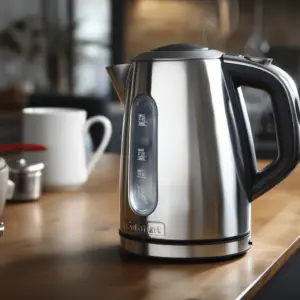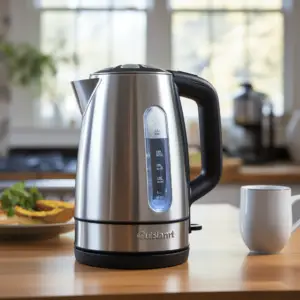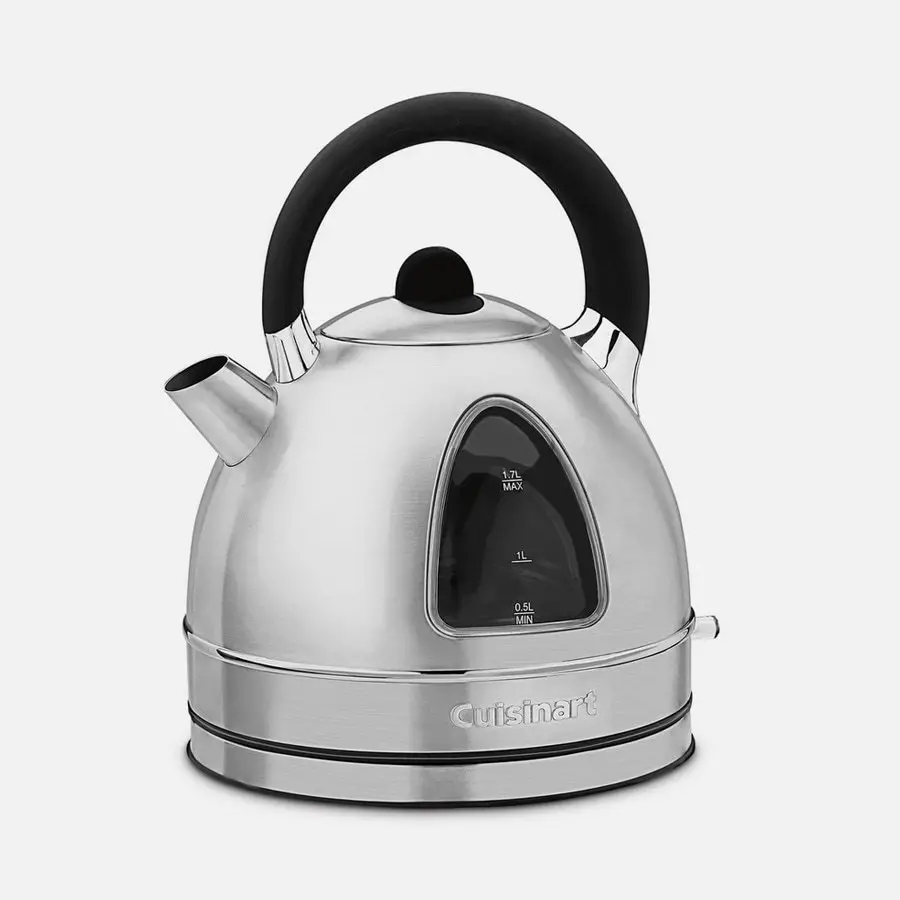Cuisinart Electric Kettle Problems, are some of the most commonly used kitchen appliances in the world. Heating water for tea or for any other purpose is such common practice that having an electric kettle is simply mandatory to operate a smooth household.
Cuisinart electric kettles are vastly popular and model after model has easily found market share. Cuisinart electric kettles are some of the most affordable and easy-to-use electric kettles available in the market.
A variety of electric kettles are available with every unique design offering you great value. Newer designs continue to boast improvements and enhancements to match today’s discerning buyer’s needs, as well as keeping in step with technological and engineering trends and innovation.
Hiccups arise despite manufacturing genius and careful usage which means at any point your kettle could begin to exhibit signs of damage and deterioration or stop working altogether.
Despite your best efforts, if your Cuisinart electric kettle begins to behave in an unusual manner, it is best to try and figure out where the problem may be and attempt a fix if that is at all possible.
Malfunctioning electrical appliances at best will cost you a pretty penny with their less than optimal power usage which inevitably begins to climb. Repair and replacement costs will not be far behind.
At worst, defective electronics are a fire hazard or an electrocution problem waiting to occur. Just for the comfort and convenience of having a fully functional electric kettle look into the problems of your kettle and resolve them early.
Table of Contents
Cuisinart Electric Kettle Problems

Most Cuisinart kettles will go the distance lasting years and in some reported cases lasting a good two decades before finally taking a bow.
Newer versions should survive longer, with replacements due to boredom and the urge for the latest models, not spoiling. The following are some Cuisinart electric kettle issues you may encounter, but most can be fixed easily.
- No lights are on
- The kettle will not power up
- The kettle is on but it is not heating water
- The kettle does not remember its settings when returned to its base
- The kettle is beeping and flashing all its lights
- The kettle is leaking
- Water is taking longer to reach boiling than before
How to solve Cuisinart electric kettle problems
No lights are on
- Check the kettle to ensure it is plugged in and secured onto the base. Preset your preferred temperature and press Start. The LED display should light up.
kettle will not power up
- Check the power chord to ascertain it is not damaged or cut.
- Plug in your electric kettle at a different socket to ensure it is not a socket problem.
- If this does not work consult Cuisinart Customer Service for advice.
The kettle is on but it is not heating water
- If there are no power issues then the heating element may have sustained damage.
- This should be replaced by a professional or by the manufacturer.
The kettle does not remember its settings when returned to its base
- If the kettle reverts back to the standby mode then you may have lifted it off the base for too long resetting its time settings.
- Return the kettle to its base and select your settings afresh.
- Do not keep the kettle off the base for more than two minutes.
kettle is beeping and flashing all its lights
- This is an error warning indicating that the water level is too low to start heating.
- The heating element could sustain damage.
- Retrieve the kettle add water beyond the indicated minimum and replace the kettle on the base.
- Input your settings and continue to boil the water.
The kettle is leaking
- This is an incredibly rare problem to have with a Cuisinart electric kettle but on the rare occasion that it does, check the interior particularly at the joint that attaches the body to the floor of the jug.
- Severe deterioration or corrosion should be the culprit.
- There is no way to fix this problem and likely this is the result of some form of misuse where some other substance has been put in the kettle other than water.
- Simply replace the electric kettle and refrain from putting anything other than water in the electric kettle.
- Simple wear is unlikely to create such a severe corrosive effect but if this is the case then the solution remains the same. The electric kettle needs to be replaced.
Water is taking longer to reach boiling than before

- If you notice this problem consistently, check the cavity of the electric kettle for a limescale residue that could be lining the interior and the heating element.
- Particularly dense build-up around the heating element will act as resistance forcing your electric kettle to draw more power to create enough heat to boil your water.
- Subsequently, the heating coil will take longer to achieve optimal temperature resulting in a longer boil.
- This residue should be removed as soon as it appears since a sufficient build-up will distort the functioning of the thermostat which keeps temperatures stable enough in the heating coil preventing it from overheating and burning altogether.
- A simple descaling procedure should be sufficient to break the scale and release the heating coil allowing it to function optimally.
- Pour clean water into the kettle and add an equal amount of white vinegar. Ensure the mixture fills up the kettle fully and let the mixture sit in the kettle for 15 to 30 minutes.
- The build-up should begin to break and float in the form of white flakes.
- Pour out the solution and make a fresh mixture. Let this sit for another 15 to 30 minutes.
- Start the electric kettle at a moderate temperature and allow the mixture to continue to break the limescale at this low temperature for about 20 minutes.
- If the build-up is gone after this soak, rinse out the kettle thoroughly to get rid of all the vinegar.
- Your kettle is ready for regular use.


